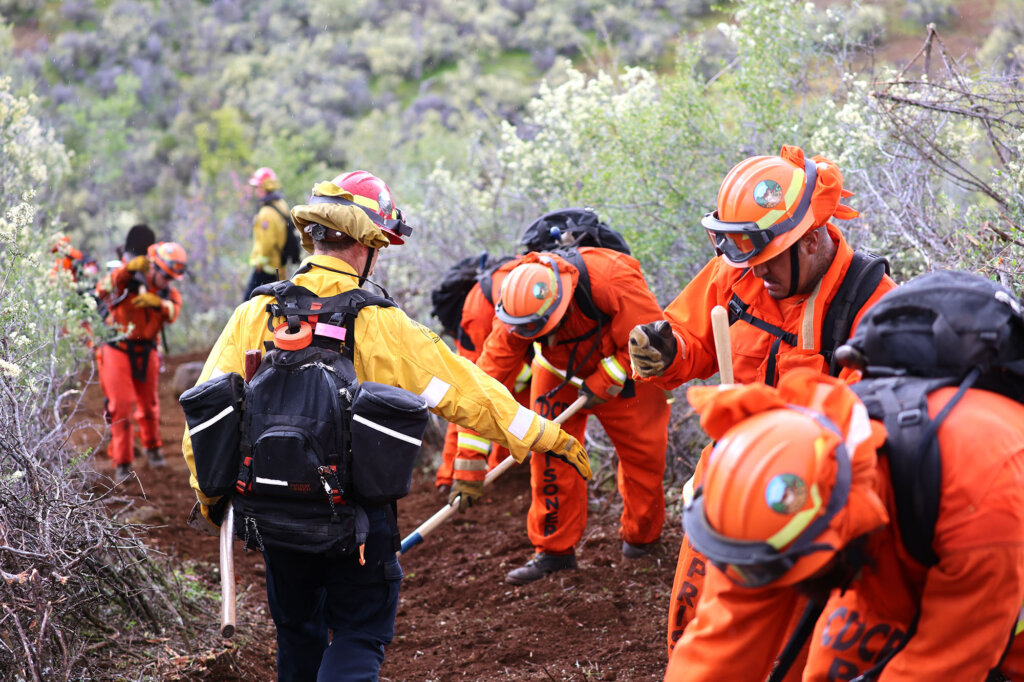Who Can Help?
Learn about the extensive network of support available, from government programs to NGOs.

Finding the right support
Post-wildfire recovery is supported by a network of federal and state programs, as well as non-governmental organizations. Learn about the assistance available for housing, environmental protection, and more, including specific programs offered by FEMA, the State of California, and various NGOs.
- Support from federal programs
- Support from the State of California
- Support from non-governmental organizations
Coordinated disaster recovery efforts
In situations of widespread need, local Emergency Managers or other government representatives take charge, working closely with government agencies, public safety officials, elected officials, and nonprofit organizations. Their collaborative efforts focus on:
- Securing public facilities, including emergency shelters.
- Identifying government assistance for special needs populations.
- Obtaining emergency food and water supplies.
County offices in California collaborate with the State of California Office of Emergency Services and the Federal Emergency Management Agency (FEMA) to ensure comprehensive support.
Public meetings: A key post-wildfire resource
Public meetings are essential for learning about the programs and services available in your community post-wildfire. This section covers:
- Recovery programs and services offered by government agencies, non-governmental organizations, and nonprofit organizations.
- The process for coordinating recovery assistance requests, which typically involves your local jurisdiction or a designated post-wildfire coordinator. Some programs might be directly accessible to individuals and households.
- The variable nature of programs and funding from year to year. Additional support may be available from community volunteers and local organizations not listed here.
- For official disaster declarations, the Disaster Assistance website provides detailed information, support services, and a pathway to apply for disaster assistance.
Available support
Whether it’s federal, state, or non-governmental, there is support available to you.
FEMA Housing Assistance
Start by registering with FEMA at DisasterAssistance.gov or via their helpline at 800-621-3362, (TTY) 800-462-7585. Following registration, a home inspection will be arranged.
Additional FEMA Resources
- Crisis Counseling
- Disaster Legal Services
- Support for Children Affected by Disasters
- Medical, Dental, and Funeral Expense Assistance
USDA Supplemental Nutrition Assistance
D-SNAP offers expedited benefits to replace lost food or for new applicants post-disaster. In California, this program is managed by the Department of Social Services. For more information, call 1-800-283-4465.
Rural Development Disaster Assistance
The USDA Rural Development Disaster Assistance offers vital support to rural homeowners, businesses, and communities to aid in their recovery and rebuilding
California provides a variety of state-specific programs for disaster recovery:
- 2-1-1 Free Information Referral Center: A free regional information and referral center that connects residents with local resources. It’s not limited to post-wildfire scenarios and operates in several regions across California.
- California Environmental Protection Agency (EPA) & Department of Toxic Substances Control (DTSC): These agencies offer technical assistance for identifying and managing disaster-related hazardous waste or pollution threats.
- California Department of Resources, Recycling & Recovery (CalRecycle): CalRecycle aims to manage the disposal of wildfire debris responsibly, partnering with local jurisdictions to develop debris management plans.
- California Department of Food & Agriculture: This department coordinates with private sector organizations to provide necessary care to animals and livestock affected by disasters.
- California Department of Transportation Emergency Relief Program: This program supports state and public transportation systems in repairing or replacing facilities and equipment damaged by emergencies.
- California Department of Housing & Community Development: Offers Community Development Block Grants (Disaster Recovery Assistance) to help rebuild affected areas and provide crucial seed money for the recovery process. For more information call 916 263-2771 or email cdbg@hcd.ca.gov.
- California Health & Human Services Agency – Administration on Aging: Supports services for the elderly during presidentially declared disasters.
- California Office of Emergency Services – Hazard Mitigation Grant Program: Post-Presidential Disaster Declaration, this program funds projects to mitigate the effects of future natural disasters. Eligible applicants include state agencies, local governments, special districts, and some private nonprofits.
- Employment Development Department: Offers Disaster Unemployment Assistance (DUA) to individuals unemployed as a result of a disaster, and who don’t qualify for regular Unemployment Insurance benefits.
- Department of Social Services – Disaster CalFresh: Provides temporary nutritional support through D-CalFresh, offering benefits on an EBT card to purchase food at authorized retail stores following a disaster. CalFresh Benefits Helpline: 1-877-847-3663.
Various NGOs are instrumental in disaster recovery efforts, including:
- American Red Cross: Provides emergency assistance and disaster relief. Go to the Red Cross website and click on “Get Help” or call 1-800-RED CROSS (1-800-733-2767).
- American Society for the Prevention of Cruelty to Animals (ASPCA): Offers sheltering assistance and funding for animal welfare organizations. Contact your local animal shelter for additional information.
- Feeding America: Delivers food to communities affected by disasters.
- Lutheran Disaster Response: Collaborates with other disaster response organizations and religious entities in the United States to help provide emotional and spiritual support, volunteer coordination, and long-term recovery efforts.
- The Salvation Army: May provide temporary assistance for families in need, including rent vouchers, emergency aid, and legal aid. For information on services provided by the Salvation Army, visit their website
- Soil & Water Conservation Districts: Offer assistance post-wildfire or natural disaster. For a listing of your SWCDs, visit the California Association of Resource Conservation Districts website or call (916) 457-7904.
- United Methodist Committee on Relief (UMCOR): Provides humanitarian relief and disaster response in the U.S. and globally, offering volunteer training, financial assistance, and expertise in disaster response.